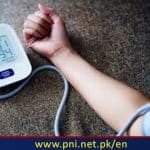Islamabad, DEC 29, (ONLINE): New research examines the effects of a few puffs of nicotine-free electronic cigarettes on endothelial function, a measure of blood vessel health.
New research examines the short term effects of vaping nicotine-free e-cigarettes.
As more and more people are trying to quit smoking, electronic cigarettes (e-cigarettes) are gaining popularity.
According to the latest estimates from the Centers for Disease Control and Prevention (CDC), more than 12% of adults in the United States have tried e-cigarettes at least once in their lives, and almost 4% of U.S. adults use e-cigarettes on a regular basis.
Advertisers promote e-cigarettes as a “more healthful” or less harmful alternative to conventional tobacco-based cigarettes. However, the long term health implications of prolonged e-cigarette use require more research.
E-cigarettes typically use electric heating to deliver nicotine through aerosolization of an e-liquid. Some studies have questioned the safety of e-cigarettes, or “vaping,” but what are the effects of vaping nicotine-free e-cigarettes?
New research, appearing in the journal Radiology, investigates this issue. Alessandra Caporale, a postdoctoral researcher in the Laboratory for Structural, Physiologic, and Functional Imaging at the University of Pennsylvania in Philadelphia, is the lead author of the study.
Studying the short term effects of vaping
Caporale and her colleagues looked at the short term effects of vaping. They asked 31 healthy, nonsmoking adults with an average age of 24 years to take an MRI scan before and after using a nicotine-free e-cigarette.
The e-cigarettes contained propylene glycol and glycerol with tobacco flavoring but did not provide any nicotine. For the study, the participants took 16 puffs, which lasted 3 seconds each.
The researchers constricted the participants’ blood vessels and released them. Then, they measured the participants’ “reactive hyperemia,” a brief increase in blood flow after the occlusion of an artery.
Some studies have argued that reactive hyperemia can be a good predictive measure of vascular function and endothelial function, although other researchers question its reliability.
Vaping impairs endothelial function
The scans revealed reduced blood flow in the femoral artery — the main artery that delivers blood to the thigh and leg. The team also noted reduced reactive hyperemia.
Based on these measures, the researchers concluded that “inhaling nicotine-free electronic cigarette aerosol transiently impacted endothelial function in healthy nonsmokers.”
The endothelium is a thin layer of cells that lines the inside of blood vessels. A damaged endothelium means poor circulation and thick arteries.
It can also potentially result in blocked blood flow to the heart and brain, which can lead to heart attack and stroke.
Follow the PNI Facebook page for the latest news and updates.








